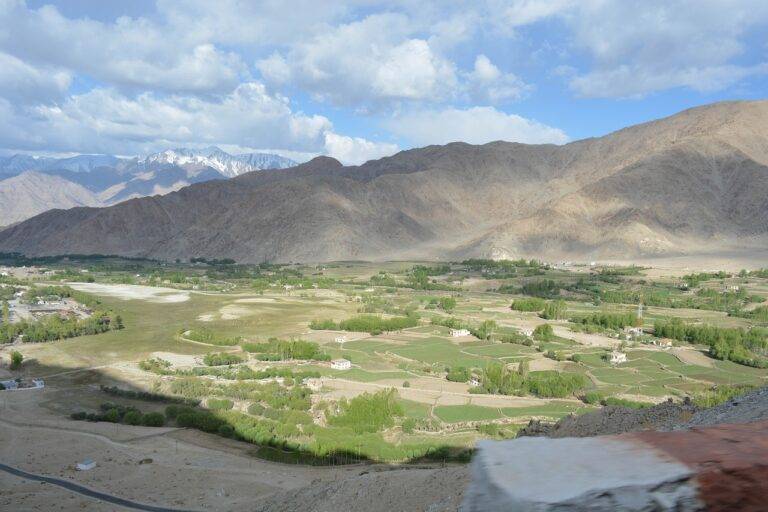Exploring the Use of Geospatial Analysis in Election Mapping
Geospatial analysis involves the examination of data that has a geographic or spatial component attached to it. This method allows researchers to gain valuable insights into patterns, trends, and relationships that exist within the data based on its geographic location. By incorporating spatial context into the analysis, researchers can make more informed decisions and predictions.
One key concept in geospatial analysis is spatial interpolation, which is the process of estimating unknown values at specific locations based on known values at surrounding locations. This technique is essential for filling in gaps in spatial data and creating continuous surfaces to represent phenomena that vary across space. Spatial interpolation methods, such as kriging, inverse distance weighting, and spline interpolation, play a crucial role in geospatial analysis by providing researchers with a way to generate meaningful information from limited data points.
History of Election Mapping
Election mapping has a rich history dating back to the early 19th century when hand-drawn maps were used to visualize voting patterns. Over time, advancements in technology allowed for more sophisticated election mapping techniques to emerge. With the rise of computerized cartography in the mid-20th century, election mapping became more precise and detailed, offering valuable insights into voter behavior and political trends.
The development of Geographic Information Systems (GIS) in the 1960s revolutionized the way election data was collected, analyzed, and displayed. GIS technology enabled analysts to overlay various data layers such as demographic information, voting precincts, and election results onto a single map, providing a comprehensive view of the electoral landscape. This integration of spatial data allowed for more accurate predictions and a deeper understanding of the complex relationships between geography and politics.
• GIS technology revolutionized election mapping in the 1960s
• Analysts could overlay demographic data, precinct boundaries, and election results on a single map
• This integration of spatial data led to more accurate predictions and a deeper understanding of political geography
As the digital age progressed, election mapping continued to evolve with the introduction of online mapping platforms and interactive tools. These advancements made it easier for researchers, journalists, and the general public to access and explore electoral data in real-time. Interactive maps allowed users to zoom in on specific regions, compare voting trends over time, and analyze election outcomes at various geographic levels.
The use of Geographic Information Systems (GIS) in modern-day elections has become standard practice for political campaigns, government agencies, and academic researchers. By utilizing GIS technology, stakeholders can identify key voter demographics, target campaign efforts more effectively, and gain valuable insights into electoral dynamics at both local and national levels. Election mapping has undoubtedly come a long way since its humble beginnings as hand-drawn maps centuries ago.
Understanding Geographic Information Systems (GIS)
Geographic Information Systems (GIS) are powerful tools that allow users to analyze, visualize, and interpret spatial data. By integrating various layers of geographical information, GIS enables users to make informed decisions based on geographic patterns and relationships. This technology has become an essential tool in a wide range of fields, from urban planning and environmental management to disaster response and public health.
One of the key features of GIS is its ability to perform spatial analysis, where users can examine relationships between different layers of data and identify patterns or trends within a geographic area. By overlaying multiple datasets, users can gain insights that would not be possible through traditional data analysis methods. GIS also allows for the creation of custom maps and visualizations, making it easier to communicate complex spatial information to a wide audience.
What is geospatial analysis?
Geospatial analysis is the process of using geographic information systems (GIS) to analyze and visualize data related to specific locations on the Earth’s surface.
Why is GIS important?
GIS allows for the integration of various types of data, such as demographics, land use, and infrastructure, which can help organizations make informed decisions and solve complex spatial problems.
How can GIS be used in election mapping?
GIS can be used to analyze voting patterns, demographics, and political boundaries to create maps that help visualize election results and understand voting trends.
What are some key concepts in geospatial analysis?
Some key concepts in geospatial analysis include spatial data, layers, projections, and spatial analysis tools like buffering and overlay operations.
How has election mapping evolved over time?
Election mapping has evolved from simple paper maps to sophisticated digital mapping tools that allow for real-time analysis and visualization of election data.
Can GIS be used in other industries besides politics?
Yes, GIS is used in a wide range of industries, including urban planning, natural resource management, transportation, public health, and emergency response, to name a few.







